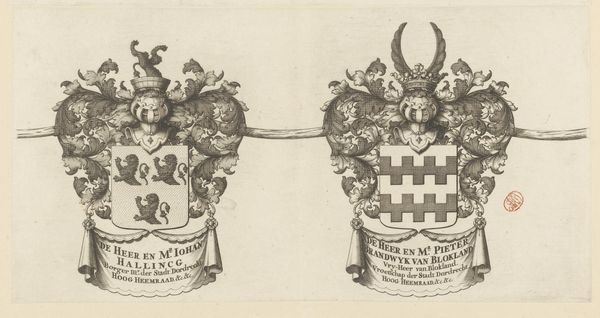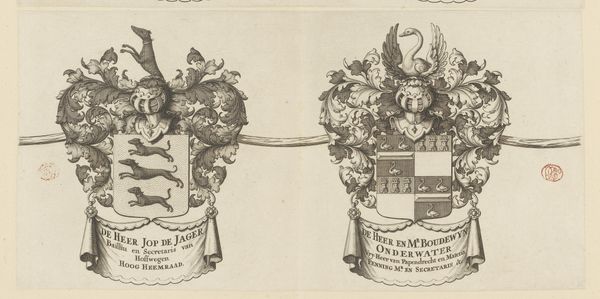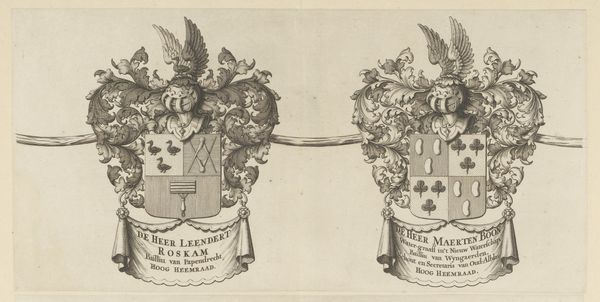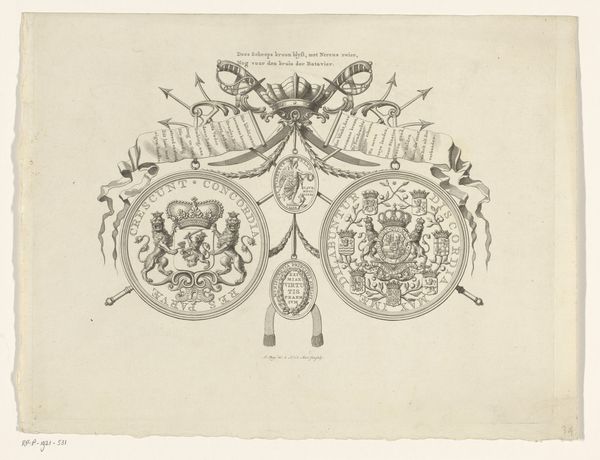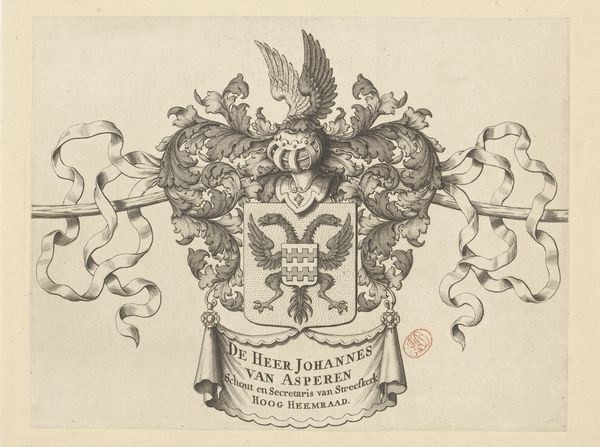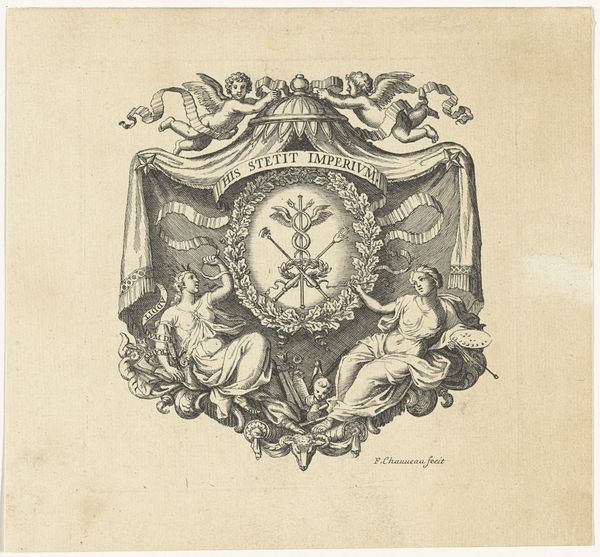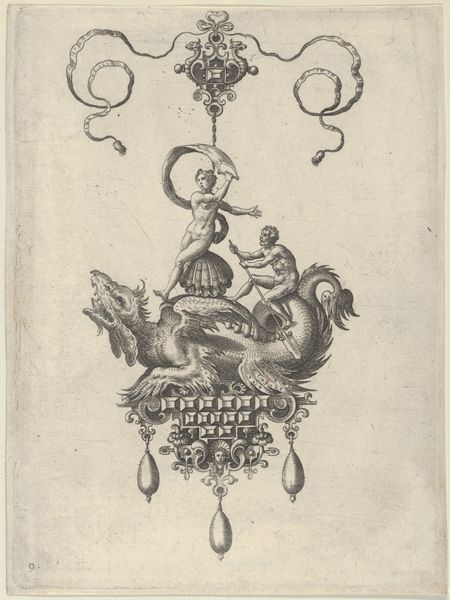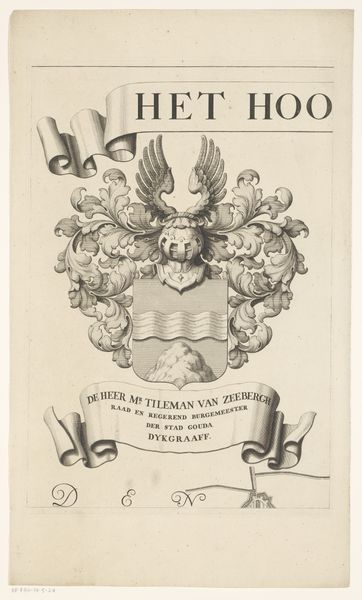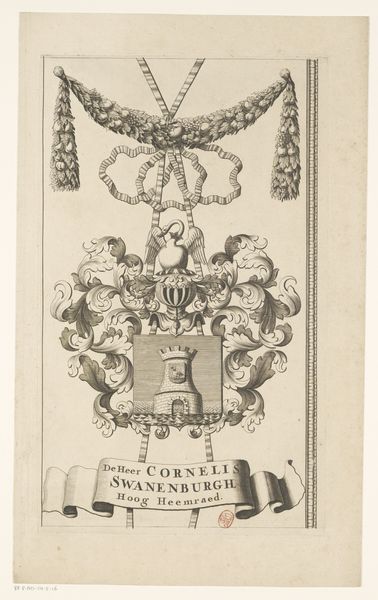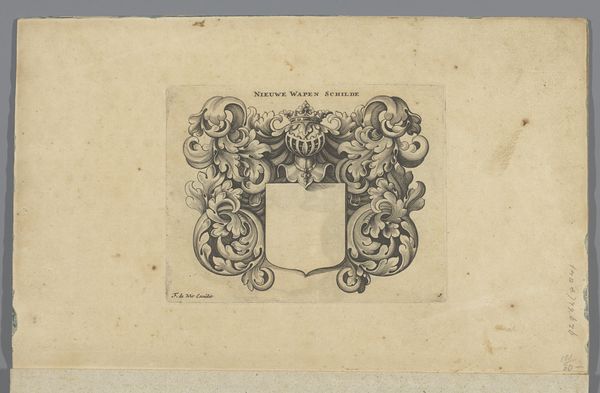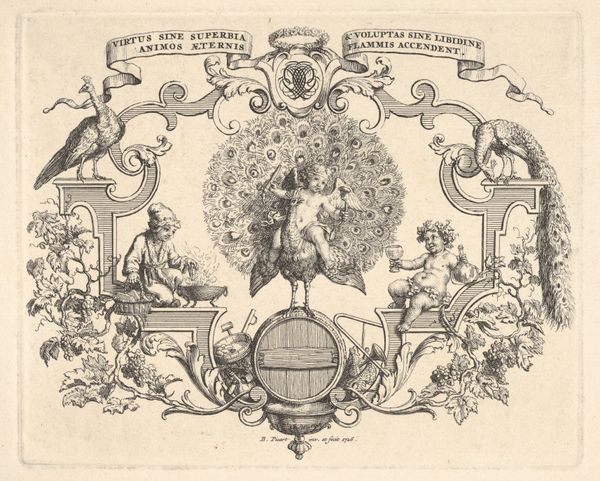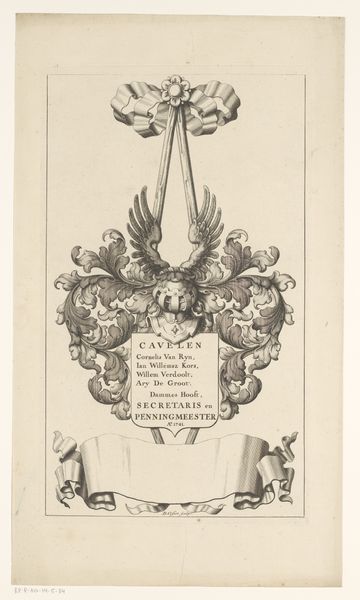
graphic-art, print, engraving
#
graphic-art
#
baroque
# print
#
pen sketch
#
line
#
engraving
Dimensions: height 234 mm, width 460 mm
Copyright: Rijks Museum: Open Domain
Curator: Here, we have an engraving dating back to 1716. The piece is titled "Wapenrand van een kaart van de Alblasserwaard en de Vijfheerenlanden (deel)," which translates to "Border of a map of the Alblasserwaard and Vijfheerenlanden (part)." Editor: Immediately, I'm struck by the stark formality of the design and the incredible intricacy in the detail. It almost feels… icy. Curator: Let’s consider its composition. We observe two distinct coats of arms presented with bilateral symmetry, connected by a ribbon device. Note how the detailed rendering of each escutcheon utilizes crisp lines and varying textures, effectively communicating depth and form through engraving techniques. The surrounding filigree work, how does that influence the formal register? Editor: Beyond the symmetry, the emblems likely reflect patriarchal family lineage. How do these symbols affirm, solidify and express a historical social power dynamic, while embedding colonial legacies into European cultural heritage and establishing societal identity and social standing? Curator: One could examine it within a structuralist frame by identifying binary oppositions – for example, the tension between naturalistic details and heraldic abstraction, to decode how the symbols perpetuate a codified system of visual communication in 18th-century Dutch society. Editor: Exactly. Each choice—the flora, the fauna, the placement—contributes to an elitist visual vocabulary designed to exclude. I am concerned with what is absent from this composition. Curator: Considering its materiality and texture, it's impressive to see such fine lines rendered with precision in this example of graphic art, wouldn't you agree? Note the different line weights to denote areas of highlight or shadow. The materiality affects the message; by examining the work as an aesthetic and symbolic achievement, we begin to better appreciate its power to uphold or question power structures. Editor: These precise marks speak volumes. Art can reframe the narrative through intervention and disruption by exploring new artistic practices that engage with these issues on power and influence in visual culture. I want art to pose pressing questions to social norms. Curator: This work definitely encapsulates and provides for analysis many different things depending on your interpretative position. Editor: Absolutely. Art helps us understand what was, but also what could be, and that makes it very vital in historical inquiry.
Comments
No comments
Be the first to comment and join the conversation on the ultimate creative platform.
